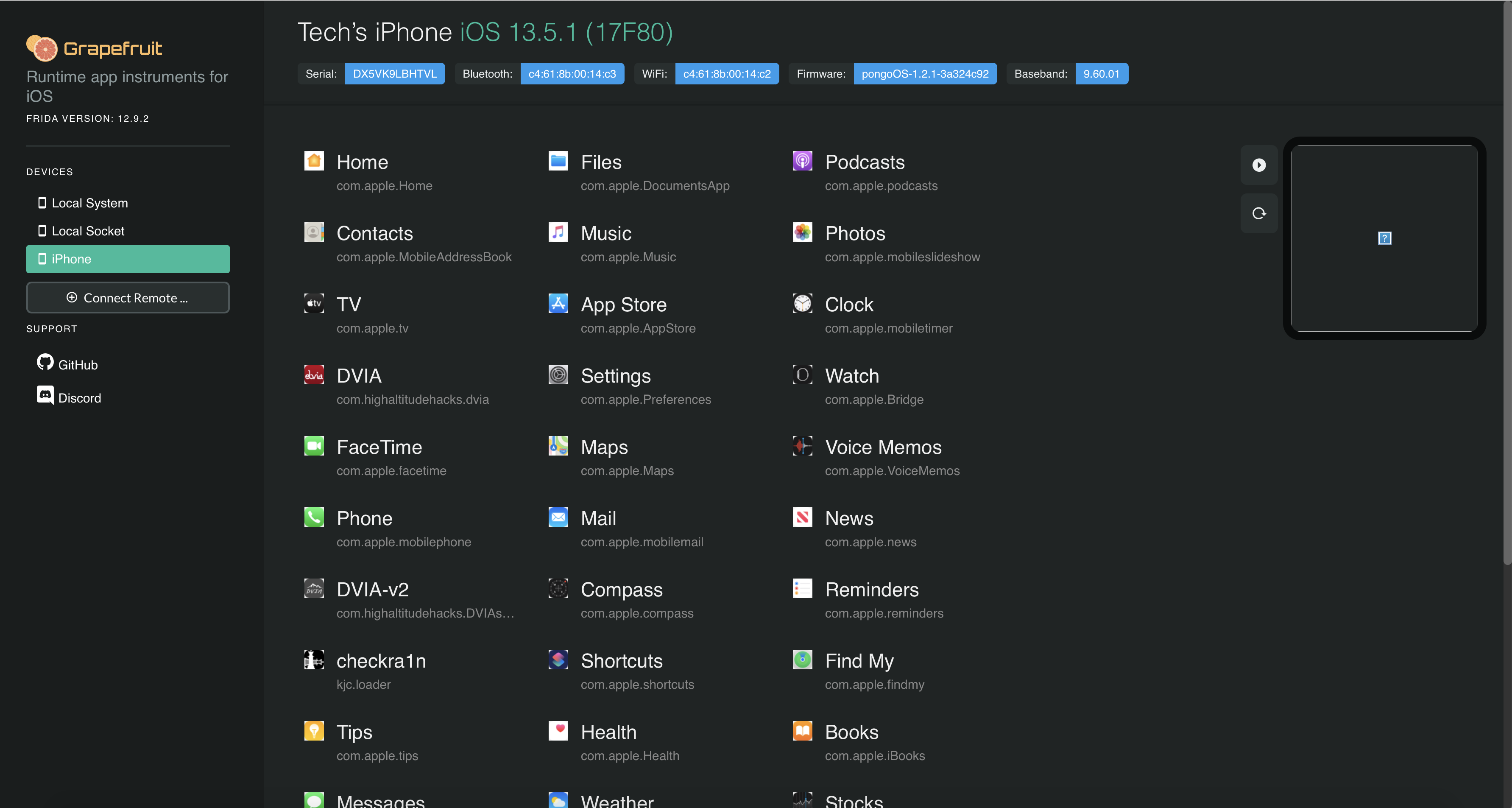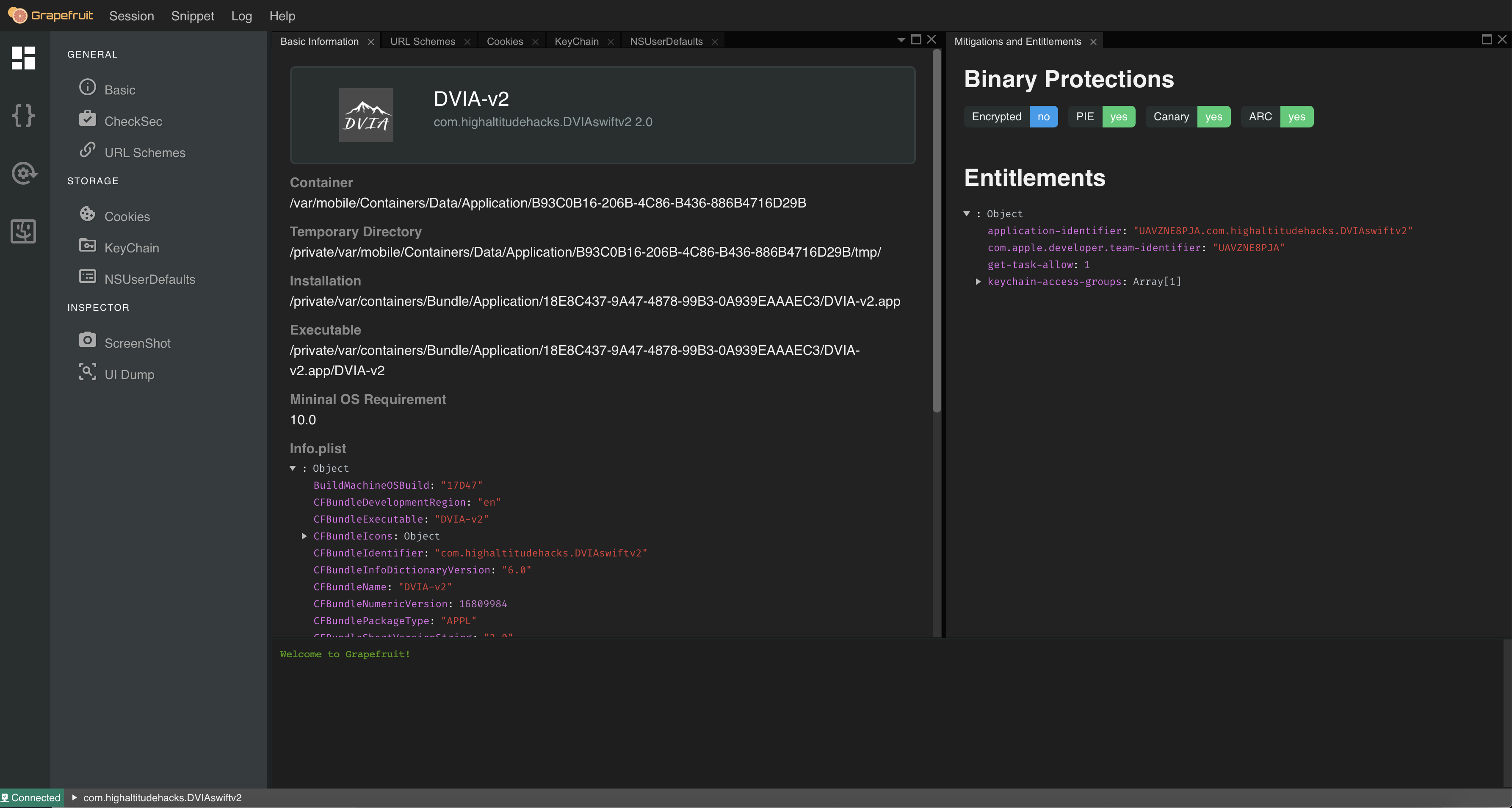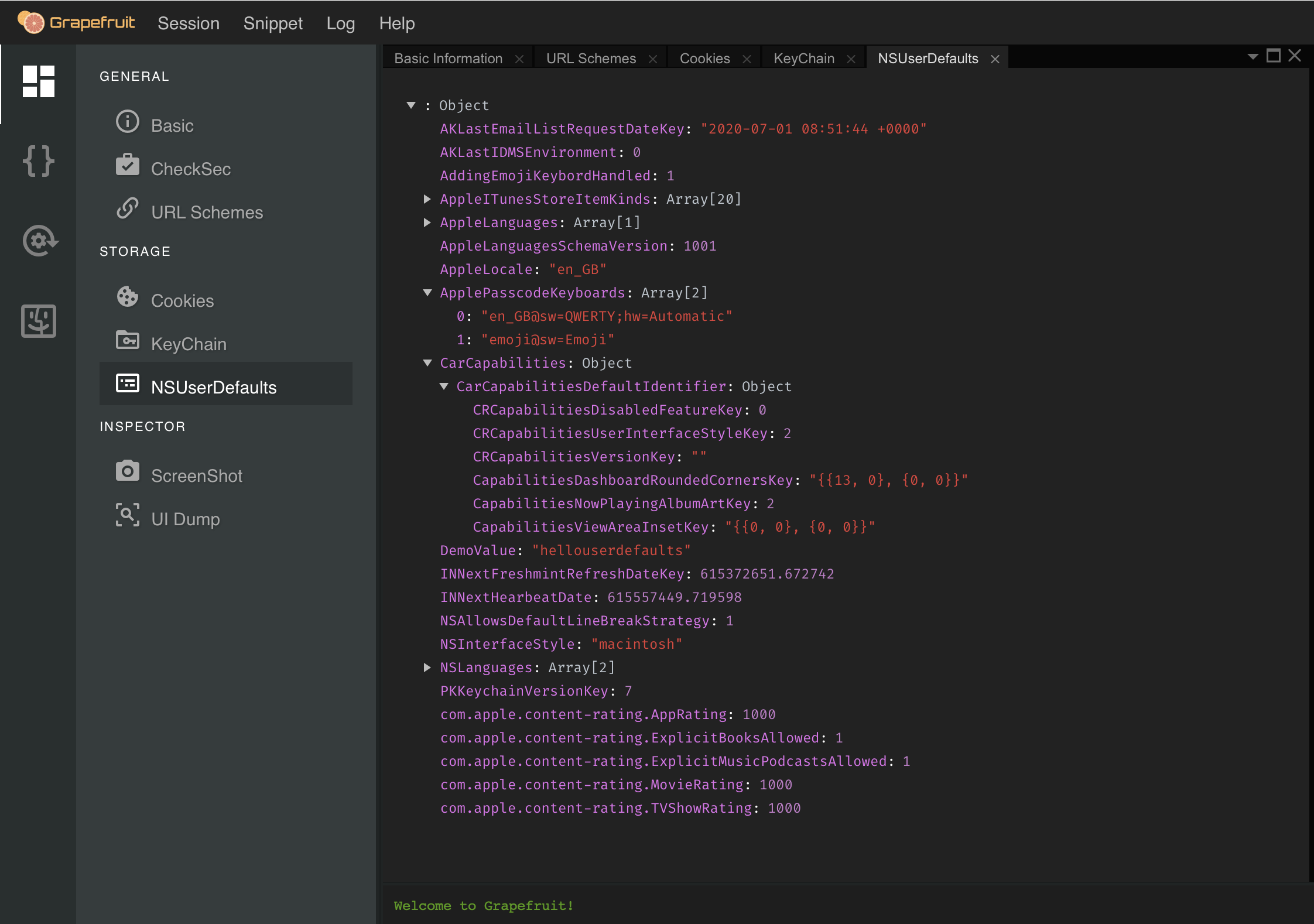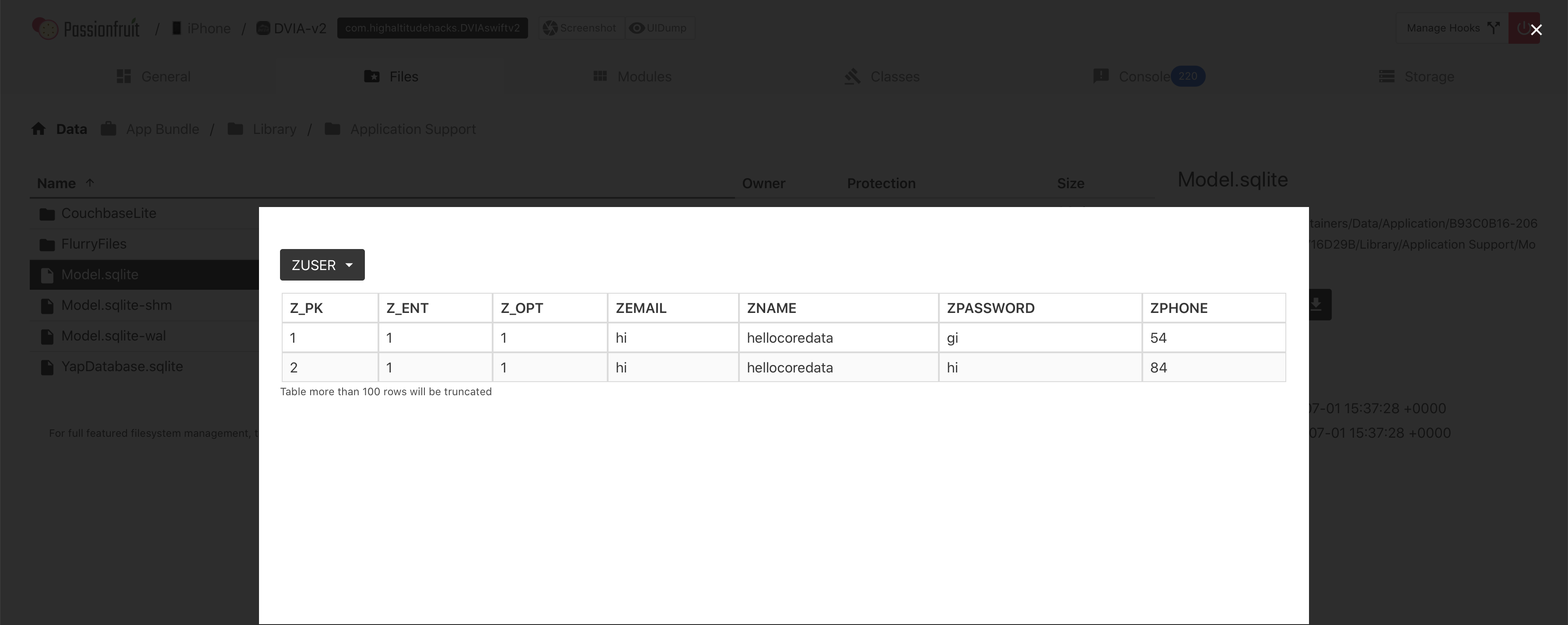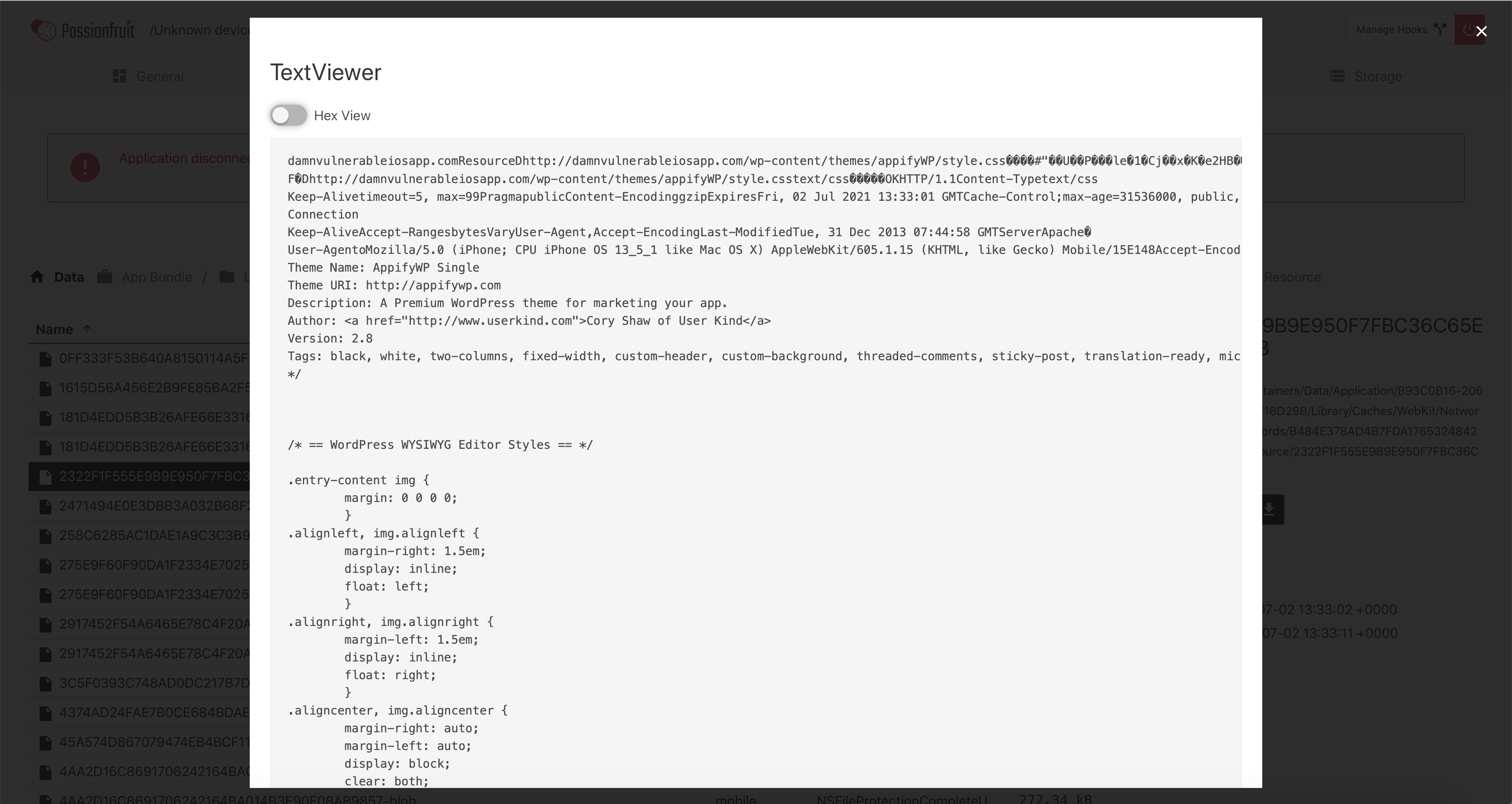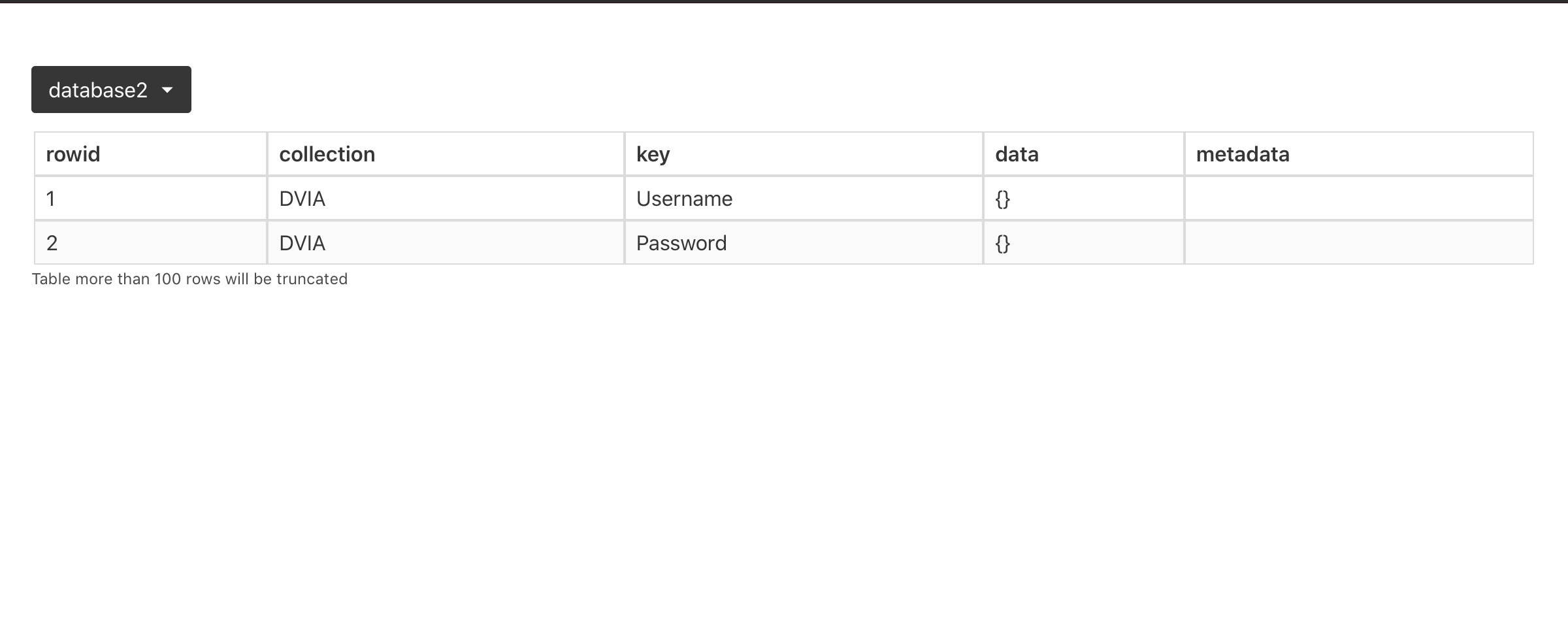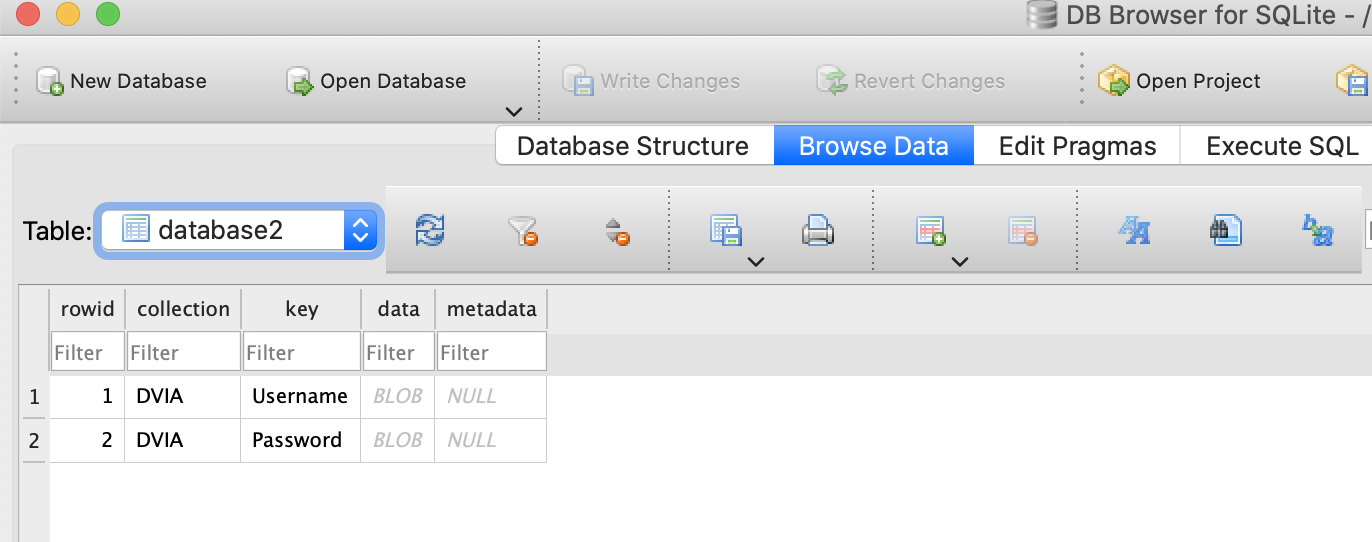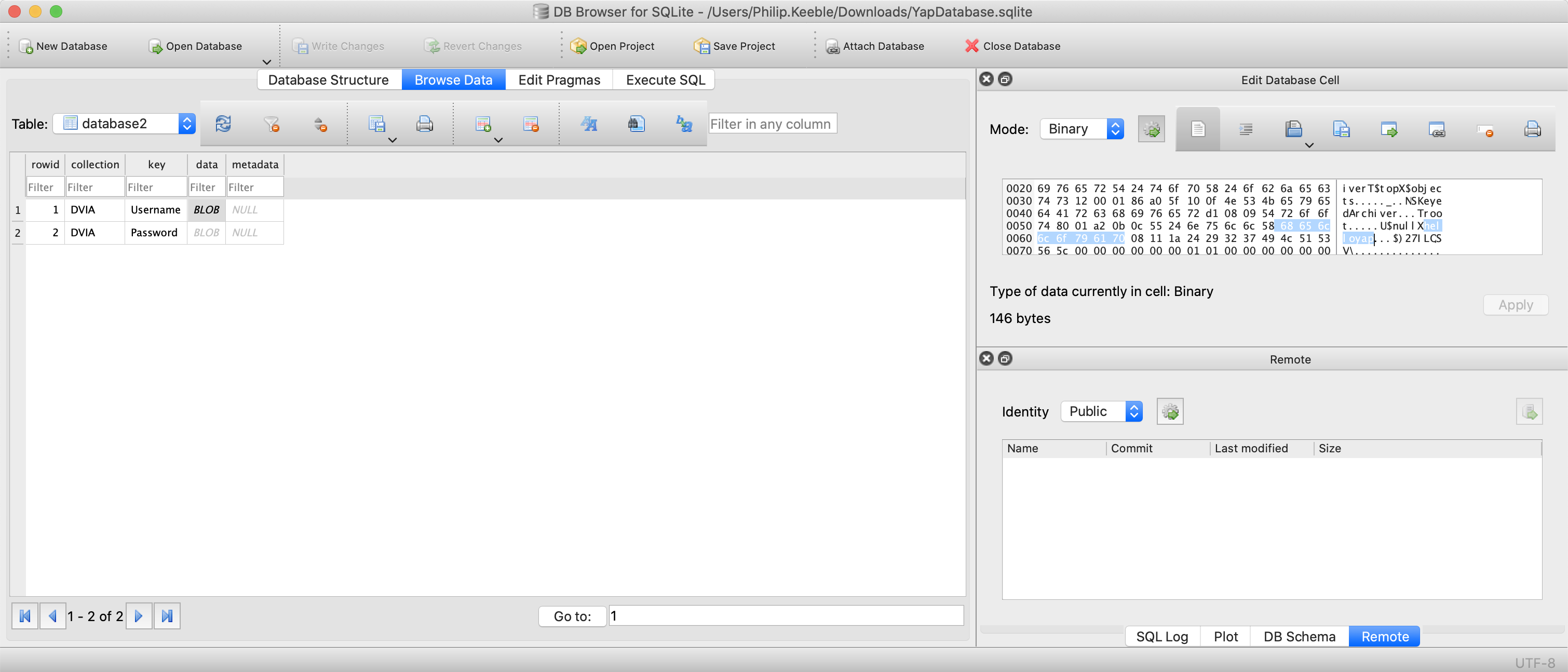Insecure iOS Storage - DVIAv2 Part 1
Intro
Mobile applications store a lot of data about the users and things for it to function. The mobile model of security is in general pretty good at stopping users from accessing this data (as long as they don’t root or jailbreak their device).
With DVIAv2 there are several pieces of information to show how an application could store data insecurely. If you load up DVIAv2 on the iOS device you can click on the Local Data Storage option. This will show you all the places it stores bad data.
The list is as follows:
- Plist
- UserDefaults
- Keychain
- Core Data
- Webkit Caching
- Realm
- Couchbase Lite
- YapDatabase
For each of these options you should click into them and see what it says. For most you will need to inject some data. For most I have just used a string such as helloplist where plist is replaced for each category. This will help to identify what you are seeing and why. Save all of these and then begin hunting!
Plist
Opening up Grapefruit, (cd into install directory and use npm start) we can see our device connected over USB with its apps.
Clicking into DVIA-v2 we can see some basic information
We can see a plist file being displayed, but it doesn’t have the information we want in it. Looking on the DVIAv2 app, it says our task is to find where this value is stored in the App sandbox.
We are within the app sandbox with Grapefruit, so lets click on the finder icon on the left hand side. Within this panel we can browse all the files (double click on the folders to expand them).
Clicking on Documents and then opening the userInfo.plist file shows us our string!
UserDefaults
Staying in Grapefruit, we can see a NsUserDefaults Panel.
Clicking on the NsUserDefaults panel, we can see the string DemoValue:"hellouserdefaults", which is the one we entered earlier.
Keychain
We can see the keychain in Grapefruit, however at the time of writing this post it doesn’t seem to be giving me the values correctly.
So opening up Passionfruit (Close DVIA-v2 on your device, then run passionfruit) we can now go to Storage > Keychain and see our value in the Keychain that has been dumped! We can also go back and see the other flags in Passionfruit.
Passionfruit can be a bit buggy and crashes often, so you may need to switch between the two, or keep closing and re-opening passionfruit when it starts timing out.
Core Data
So looking around the sandbox within Passionfruit, I ended up going to the following directory:
Data > Library > Application Support
Click on the file Model.sqlite and it should open a SQL viewer. In the top left select the table ZUSER and you should see the data you stored for core data, in this case hellocoredata!
Webkit Caching
In Passionfruit we can see:
Data > Library > Caches
This has a couple folders of interest. One is the WebKit folder that links to the same name as the challenge. The other is the com.highaltitudehacks.DVIAswiftv2.
If we look at com.highaltitudehacks.DVIAswiftv2 first, we can see a Cache.db file inside. Opening it in the SQL browser doesn’t show much but does show us tables starting with cf_url which DVIA-v2 tells us is the right table.
If we look at WebKit we can go into NetworkCache > Version 16 > Records > GUID > Resource
The GUID will likely change between devices, but may correlate to DVIA-v2. I am unsure on that.
You should see several files though. If we click on some of them and open them in the text editor, then hit the Hex View button at the top, we can see clearly that what we are seeing is cached web responses for pages that I have never visited and has been stored through the App.
So it seems like we have found the table and the data that we needed to find. We didn’t store a string for this challenge so I will assume we are done. If any of these responses had sensitive information such as banking information, then we could see them as well since they were cached through the application.
It will only save data viewed from within the app. You may need to go to the front page of the iOS app and hit the link there for the DVIA website. This will open the website within the app and will hopefully cache data to show the vulnerability.
Realm
In Passionfruit got to:
Documents
In Documents you can see the default.realm file. This is the file that should store our realm data.
I got Realm Browser from the Apple Store, downloaded the file and then opened it with the Realm Browser. It’s empty but I can see that every time I enter more data on the app, the number of entries in this table increases.
I don’t know why its showing as empty. If I view it within a text editor the values can’t be read. I know it’s storing here, so I assume I am either on the wrong path or the application is storing it weirdly as it did with the YapDatabase.
Couchbase Lite
In Passionfruit, go to the following directory:
Data > Library > Application Support > CouchbaseLite > dvcouchbasedb.cblite2
You should see the db.sqlite3 file. Let’s download that.
Now lets open it up in a SQLite browser and locate some data.
Click on Browse Data and then select the revs database and we can see the string hellocouchbase and the password stored!
YapDatabase
In Passionfruit, use the file explorer to go to:
Data > Library > Application Support
A file named YapDatabase.sqlite can be seen here. If I open this with the sqlite view in Passionfruit it shows me no information.
However, you can use the buttons on the right hand side to either view it as text or to download the file and then open it on your computer in a SQL browser.
I have clicked on the download button and then opened SQLite browser. You can click on the tables and then click on browse data at the top to look for the data.
We can’t see the values yet, but we can see that there are blobs stored in the DB. If we click on the blobs we can see text in the right hand side, and can locate our string!
Highlighted is the string helloyap.
Summary
Having found the data DVIA wanted us to find, I will move on. The next section on the application is jailbreak detection, so I will likely try that next!

